Dungeon Crawling is Fun Again: Etrian Odyssey
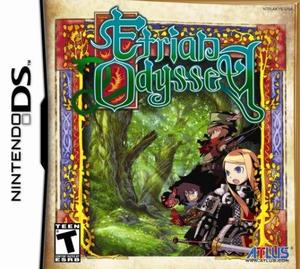 Dungeon crawling has always been a popular subset of the RPG genre. Sometimes motivating players requires a massive story, plot twists on top of plot twists, and evil villains out to rule the world. Other times, a party of heroes and a dungeon full of treasure is enough. But despite the popularity of the latter design among CRPG fans, the genre shrunk in favor of RPGS built around massive stories, like Mass Effect.
Dungeon crawling has always been a popular subset of the RPG genre. Sometimes motivating players requires a massive story, plot twists on top of plot twists, and evil villains out to rule the world. Other times, a party of heroes and a dungeon full of treasure is enough. But despite the popularity of the latter design among CRPG fans, the genre shrunk in favor of RPGS built around massive stories, like Mass Effect.
Today I want to look at the Etrian Odyssey series from Atlus; a company known for Japanese role playing game (JRPG) design, and how it managed to relight the fire for the classic dungeon crawl with old and new mechanics.
A Beginner’s Guide to Dungeon Crawlers
Before we talk about Etrian Odyssey, let’s quickly recap the dungeon crawler genre.
Dungeons crawlers have been popular since the 80s, with series like Might and Magic and Wizardry. In these titles, you assembled a party of heroes from predefined classes like warrior, cleric, mage etc, and explored dungeons for treasure and monsters. Combat was typically turn based, as you attempted to sojourn as far as possible before being forced to return to a town or safe area.
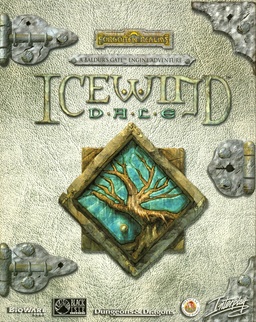 Combat was brutal, with both sides fragile, and you had to constantly assess whether or not to keep going. Successful play hinged not only on smart party tactics during combat, but creating a party that synergized well. A party of four mages is sure to do a lot of damage, but without healing or a tank-like fighter, they won’t last long.
Combat was brutal, with both sides fragile, and you had to constantly assess whether or not to keep going. Successful play hinged not only on smart party tactics during combat, but creating a party that synergized well. A party of four mages is sure to do a lot of damage, but without healing or a tank-like fighter, they won’t last long.
Dungeon crawling in the mid 90s -00s evolved into open-world styled games. After creating a party, the player was given a huge area to explore for treasures, dungeons and creatures to fight. A fine example is Icewind Dale.
Despite their popularity as one of the original forms of RPGs, the dungeon crawler genre started to shrink for several reasons. One was that the payoff was nowhere near as rewarding as story-focused games like Baldur’s Gate. They were also left behind by the growing trend to give players the ability to guide the story through their actions, as in Knights of the Old Republic.
The rising popularity of The Elder Scrolls series also gave players the means to fully customize their experience, without all that hardcore difficulty. Another factor was that many dungeon crawlers did not age well; they featured cumbersome UIs, and required a lot of time to make any real progress. Speaking of requirements, many required players to draw their maps and, as games became more accessible, this mechanic was scorned.
As we entered the latter half of the 00’s, dungeon crawling or “old school RPGs” faded from the mainstream market. This was why the release of Etrian Odyssey, with its goal of recapturing that experience, was a nice surprise.
Modernized Dungeon Crawling
Etrian Odyssey was developed by Kazuya Niinou from Atlus and released for the Nintendo DS back in 2007. In his Director’s Diaries on the game site, Kazuya talked about wanting to make a game very much in the spirit of older turn based RPGs. Meaning party based, first person and with an emphasis on party creation.
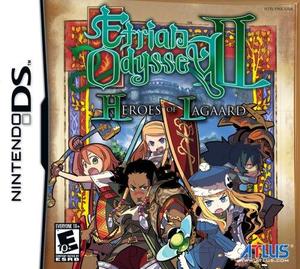 Just like the original dungeon crawlers, Etrian Odyssey sent a group of adventurers into a mysterious dungeon for fame, fortune and to uncover a grand mystery. However, despite the old school flair, the game featured modern allowances to ease new and old players back into the design.
Just like the original dungeon crawlers, Etrian Odyssey sent a group of adventurers into a mysterious dungeon for fame, fortune and to uncover a grand mystery. However, despite the old school flair, the game featured modern allowances to ease new and old players back into the design.
Mapping was all handled by the DS’s bottom screen which allowed for easy drawing and referencing. The developers took a more streamlined approach to party management and RPG design as well, giving each of the game’s unique classes straightforward skills and an easy to understand interface.
Speaking of classes, Etrian Odyssey‘s class design became more and more impressive as the series progressed. Each game featured unique classes that were attempts at breaking away from the classic RPG class designs of warrior, cleric, thief, etc. Gunners, robots, pirates, ninjas, gladiators and more could fill out your ranks.
What made their class design work was that the developers avoided a major flaw of classic RPGs — locking vital skills to specific classes. In the old days, specialized skills needed to progress could only be used by specific classes. For example, mages were the only ones who could do elemental damage, and only clerics could heal. If you wanted that viability, you always needed them in your group.
With Etrian Odyssey, many classes featured variations or copies of specific abilities, so that you avoid being forced to take certain classes. For instance, healing skills are available from multiple classes, so you weren’t always required to take a medic.
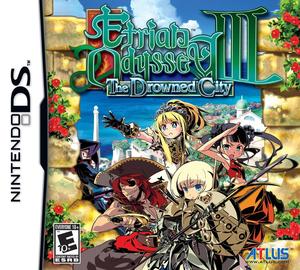 This freed up players to create a variety of parties that could take on the main game without trouble. In fact, one of my favorite ways to challenge myself was developing a party without a dedicated healer or mage class to see if I could create something viable.
This freed up players to create a variety of parties that could take on the main game without trouble. In fact, one of my favorite ways to challenge myself was developing a party without a dedicated healer or mage class to see if I could create something viable.
One aspect that was definitely reminiscent of the classic designs was the difficulty. This became as polarizing of a point now as it was back in the day. Etrian Odyssey was hard; with party wipes possible even on the very first floor of the game.
The series introduced mini bosses called FOEs or “Field on Enemy.” They wandered around in the dungeon and could tear apart a party within a few turns if players weren’t prepared. The early stages of any game in the series were the hardest, before you leveled up your characters and acquired skills to round out their tactics.
This adherence to old school difficulty had a strong impact on the reviews for Etrian Odyssey. Many reviewers criticized it, saying it was frustratingly difficult, while others praised the game for bringing dungeon crawling design to a new generation. Sequels two and three were better received, as people began to expect this throwback to classic RPG design.
For the last two games in the series, they’ve added in a loose over world exploration mode where you can explore to find items and new bosses. Number 3 turned it into a mini-game of sailing the ocean to get to places within a certain number of turns. And number four simply gave you an airship for exploring and tying all the dungeons into the world.
Finding Treasure
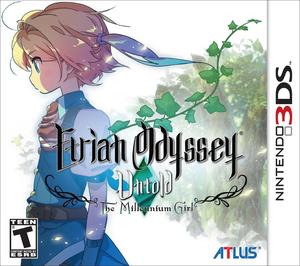 Lastly, for those of you interested in modern day dungeon crawlers, here’s a partial list of games that have gone the dungeon crawling route.
Lastly, for those of you interested in modern day dungeon crawlers, here’s a partial list of games that have gone the dungeon crawling route.
First is of course Etrian Odyssey. At the time of this post, there are four games in the series; three on the DS and one on the 3DS. The original three can be hard to find, but Atlus has been re-releasing them for the 3DS under the Untold brand with the first game available and the second due any day now. The Untold versions feature updated graphics and music, class balancing and a story driven quest alongside the traditional dungeon crawling one. Given this pattern, the third game should be next on the list while Atlus is still developing Etrian Odyssey 5.
As for the previous four, personally I found number three to be the best in the series for hardcore fans. It is also the hardest, with the most bosses, dungeons and greatest class variety; I can’t wait for the eventual Untold version. Number four rebooted the series for the 3DS with changes to the character progression system.
Previously, the only thing stopping players from unlocking the higher tier skills was the number of skill points they had. In number four, every class had three tiers of skills categorized by level ranges. This restricted what you could do with your classes, but gave the developers greater leeway in skill balancing and design.
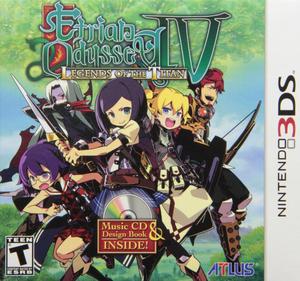 Also from Atlus are Shin Megami Tensei: Strange Journey and Persona Q, which took the respective brands and mixed them with the Etrian Odyssey dungeon crawling design.
Also from Atlus are Shin Megami Tensei: Strange Journey and Persona Q, which took the respective brands and mixed them with the Etrian Odyssey dungeon crawling design.
Shin Megami Tensei by the way, is another fascinating example of RPG design, and one way too big to get into in this post.
Finally from Atlus was their attempt at going really, really old school with The Dark Spire, which wasn’t as popular due to a greater adherence to old school design, and the fact that it didn’t make the modern day allowances of Etrian Odyssey.
On the PC front, we have seen some developers try their hand at recreating the dungeon crawling experience. The Legend of Grimrock 1 and 2 are modern day takes on old school dungeon crawlers with a real time combat system.
Finally, Redhook Games has released Darkest Dungeon, which combines brutal rogue-like design and tactical gameplay in a Lovecraftian world.
Old is New Again
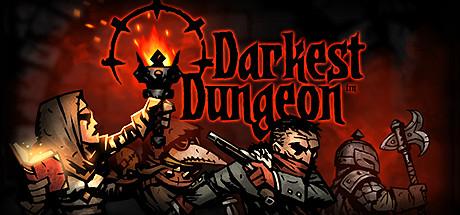 Today, Indie and even AAA developers are finding new success with reviving old designs and series, but Atlus was one of the first developers to reach back to revitalize an older genre. Older game designs still have merit when they are examined to figure out what worked and what didn’t. The Etrian Odyssey may have started off firmly in the hardcore camp, but the developers have been doing their best to bring their love of party-based RPGs to a greater audience.
Today, Indie and even AAA developers are finding new success with reviving old designs and series, but Atlus was one of the first developers to reach back to revitalize an older genre. Older game designs still have merit when they are examined to figure out what worked and what didn’t. The Etrian Odyssey may have started off firmly in the hardcore camp, but the developers have been doing their best to bring their love of party-based RPGs to a greater audience.
Even though dungeon crawlers aren’t as huge as they were back in the day, there is an audience looking for games like Etrian Odyssey and well designed RPG systems; which is what makes or breaks this kind of design. Balancing difficulty with design is never easy and it takes a skilled team to make that perilous journey worth taking.
Josh Bycer is a Game Industry Analyst with over seven years of experience writing about Game Design and the Industry. You can find his posts, podcasts and daily videos on his site Game-Wisdom and contribute to his ongoing Patreon Campaign to help him continue to create great content.
Very interesting article. I bought Etrian odyssey II for a friend of mine. We both liked it but we just don’t feel like grinding in RPGs anymore.
Every time I think I want to play a game like Dark spire, or even Dragon Quest, I don’t when I think about all the building up that goes into beating one of those games.
Grinding is definitely the catch about the EO series. Even the remakes and EO 4 are going to require several hours of grinding at some point in your party’s timeline. I am working on some pieces about the brand Shin Megami Tensei which in my mind, are the counter examples to traditional JRPG design.
It seems kinda silly to go back and post on an article that is almost two years old, but…
I figured out how I like to play RPGs like this. The work great when played on a phone. I can play them on my lunch break at work, riding in a car, or waiting in line.
Who cares about having to grind for a couple hours here and there when you’re doing it while you can’t be doing anything else.
Square Enix has the first 6 dragon quest games available on iphone and i’ve played through all 6 this way.
I figured if i’m going to have mindless time waster games on iphone, i might as well being playing one of those older RPGs i’ve never gotten around to.
Now if they would release VII for the iphone instead of 3DS.
[…] abilities being usable by multiple classes. Josh Breyer, an author and veteran Etrian Odyssey fan, states, “one of my favorite ways to challenge myself was developing a party without a dedicated […]